Want to really get a taste of Malaysia? This how-to guide on home brewing your own traditional rice wine can give you just that taste, and one with a kick! Alex Sorenson provides a bit of background and all the step-by-step directions.
Virtually every region of Asia has its own local take on rice wine, and while commercially produced brands are available in many places, more often than not, the majority of what is being consumed is produced on a much more local basis. In many cases, in the home in fact. Brewing your own rice wine is actually quite an easy undertaking and well worth trying.
Perhaps the most well-known of the Malaysian rice wines is Sarawak’s tuak, which is actually the Iban tribe’s version. In Sabah, it is generally known as lihing, or tapai – though that can also refer to a fermented cassava wine.
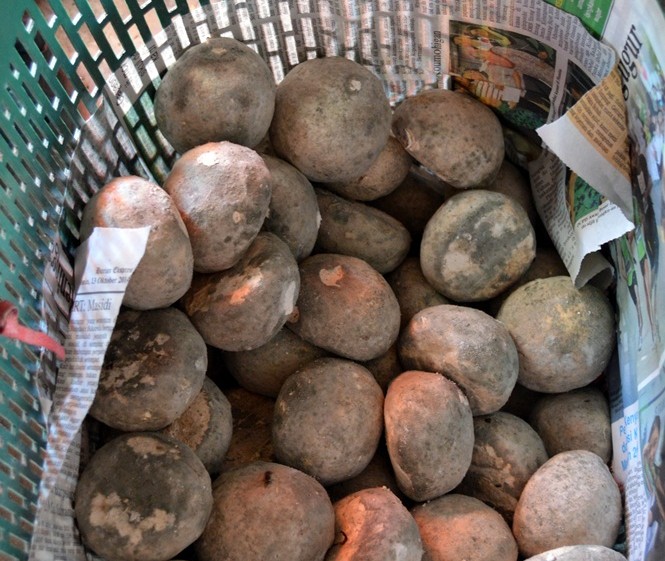
The lihings and tuaks of Borneo can vary widely in taste, some resembling unfiltered sake, sweet wine, or aged ones even recalling sherry. They can also vary widely on the spectrum of dry to sweet, with many falling more on the sweet side, and can similarly range in alcohol content from 5 to 30%.
Main components
Brewing your own rice wine only involves a few ingredients and minimal effort. The two main components are the rice itself, and ragi, a yeast and enzyme mixture. Glutinous rice is almost exclusively used, as it has a higher sugar content, which is what will be fermented into alcohol.
Other types of rice can be used, or mixed with the glutinous rice to achieve different flavors. Black glutinous rice yields excellent results, with a much more complex flavor, though it is more expensive.
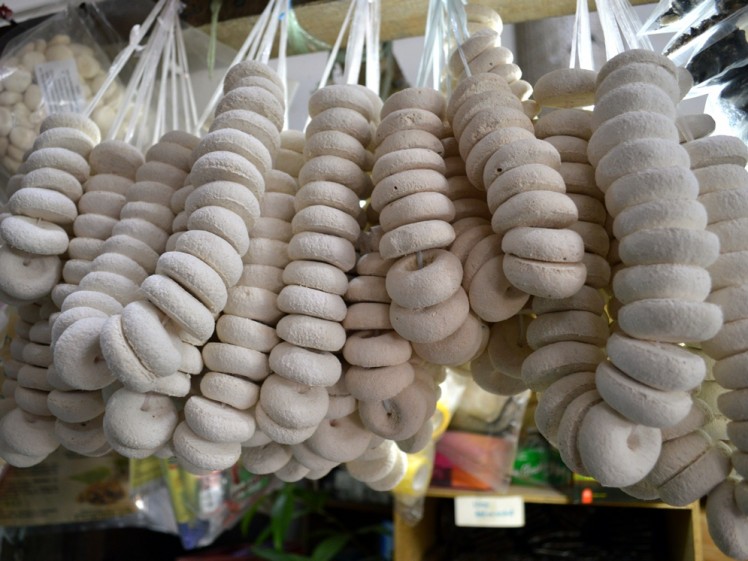
The other main component is ragi, a white cake that somewhat resembles moth balls and contains natural enzymes and yeast. The enzymes break down the rice and convert its starch to sugar, which the yeast then ferments. Ragi can be found in the wet markets – look for the vendors selling betel nut and tobacco, as they are generally the ones who sell ragi as well.
Ragi is available in various shapes and sizes, as well as different types – manis (sweet) and pahit manis (bittersweet). The manis ragi will yield a very sweet wine, more suitable for cooking. The pahit manis ragi is much better for a drinking wine, with a more balanced, dryer flavor.
The ragi cakes consist of rice flour, natural enzymes and yeasts, and various spices. Generally, a number of types of ginger are included, and any number of other ingredients, including cinnamon, chili, tobacco, or betel leaf. Ragi from different vendors may vary considerably.
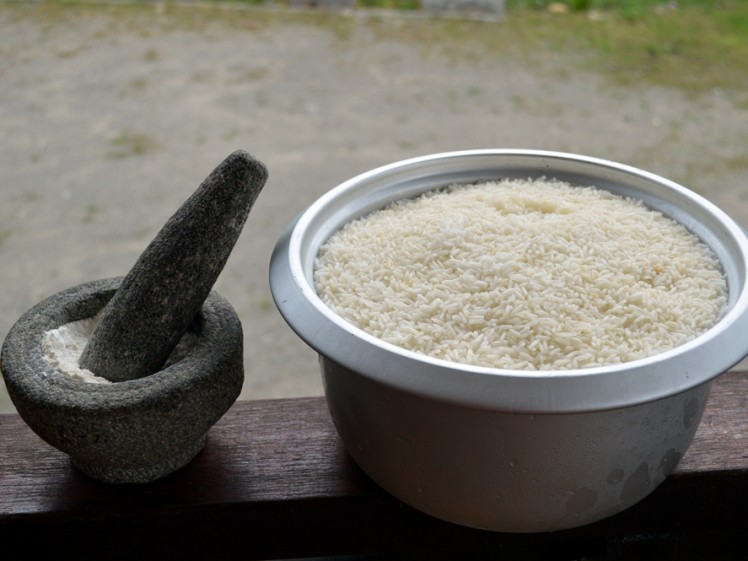
To make rice wine, you simply cook rice, mix in the ragi, and let it ferment. The more traditional recipes only use rice and ragi, while newer recipes add sugar and water to the mix, greatly extending the yield, but with a lighter and sweeter flavor.
Equipment
For equipment, you need a large container to ferment the rice in and an airlock. Beer brewing equipment is perfect, or an easy alternative is a large water jug (10 liters or more), a short piece of rubber tubing and a small glass jar. The water jug most likely has a hole for a water dispenser; if not, simply punch a hole through the cap.
Insert the rubber tube through the hole, leaving a couple of inches inside the jug, and about 6” for outside the jug. Fill a small glass jar with water, tape or tie it to the top side of the water jug, and submerge the free end of the tubing into the water (photo above). A little silicone sealant on the cap around the tube will ensure it is airtight.
The airlock allows the carbon dioxide from the fermentation process to be released, while preventing contaminants from the outside air from entering. Do not allow it to ferment in a sealed container, as the carbon dioxide will build up until it explodes.
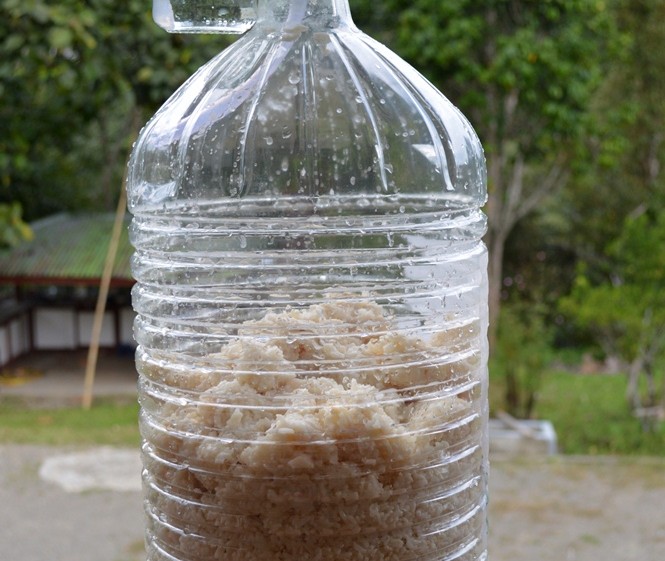
The most important thing to keep in mind in the whole process is sanitation: once you’ve cooked the rice, you want to do everything possible to eliminate any outside contamination, as bacteria and mold can spoil the wine, making it sour. Sanitize any utensils or containers you will be using by boiling them, and make sure you wash your hands thoroughly. Avoid touching the rice with your hands once it is cooked.
Process
Traditional Tuak / Lihing (Rice Wine)
• 2kg glutinous rice
• 1pc pahit manis ragi (yeast and enzyme cake)
Optional
• 2kg sugar (any type – white, brown, palm)
• 2l water
Cook the glutinous rice until it is cooked but still firm. For this volume of rice, you will most likely cook it in a pot on the stove top, or in a rice cooker. For best results, soak the rice for at least an hour, drain, then cover with water to the depth of your first knuckle.
If you haven’t used this rule of rice cooking before, cover the rice with water to the top of the rice, then continue adding water to the depth of your first joint – that’s a third of your finger, not to the middle knuckle. Cook the rice, then let it cool. To speed the cooling, you can spread the rice out, but you need to be careful to keep it clean and uncontaminated at this point. I prefer to cook it the night before and then let it cool in its cooking pot overnight.
Once the rice is cooled, crush the ragi into a powder with a mortar and pestle, then mix into the rice. You can either mix it all together, or just sprinkle ragi over successive layers of rice as you put it into your fermenting container.
Close the fermenting container and attach the airlock. Now wait for the magic to happen.
Variations of rice wine
To make the most traditional style, with the deepest, cleanest rice flavor, simply leave the rice and ragi to ferment until a large amount of liquid has been produced. Generally this takes one to three months, but depends on the specific ragi, altitude, and temperature, so there are no hard and fast rules. The longer you leave it to ferment and then mature, the deeper and richer the flavor and color will be.
To make a more modern style, after two weeks add a sugar syrup to the fermenting rice. Bring the sugar and water to a boil, then let cool overnight. Pour into the fermenting rice, reattach the airlock and wait another two weeks. Once the airlock stops bubbling, the fermentation is complete. You can allow the wine to continue to mature on the rice indefinitely.
With either method, once you are ready to drink your rice wine, pour it out of the container and through a fine mesh strainer – a coffee strainer works well for this. It will be cloudy, and have a nice rice flavor to it, but if you pour it into a bottle and let it rest for a few days, the rice particles will settle to the bottom, giving you a clear wine with a slightly less-pronounced rice flavor.
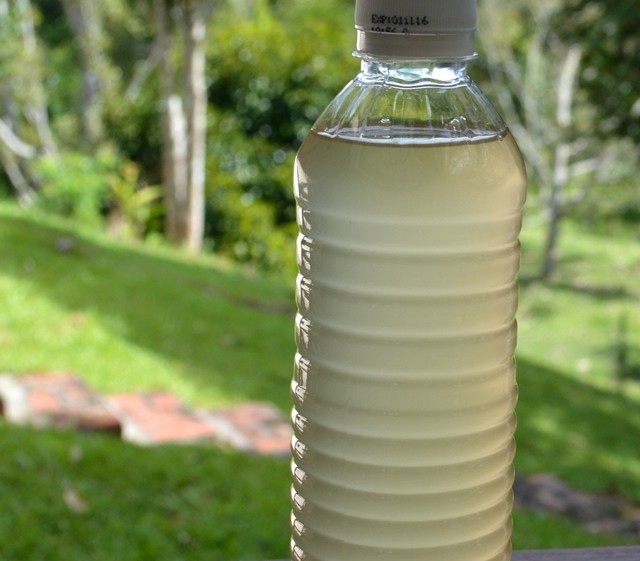
If the rice wine tastes slightly sour, it is still fine. If it has a very pronounced sour smell and flavor, chances are something got in and contaminated it somewhere along the way; it probably won’t hurt you, but if it’s not pleasant to drink, toss it and start a new batch, but be more careful with your sanitation.
Photo credit: [dac~ ] / Foter / CC BY-NC-SA
Source: The Expat Magazine January 2015
Editor’s note: For great cocktail recipes using your homemade rice wine, pick up a copy of Borneo Spirits & Tuak Tales. It’s available at Silverfish Books in Bangsar, or most major bookstores nationwide.
READ MORE
Book Review: Borneo Spirits & Tuak Tales
"ExpatGo welcomes and encourages comments, input, and divergent opinions. However, we kindly request that you use suitable language in your comments, and refrain from any sort of personal attack, hate speech, or disparaging rhetoric. Comments not in line with this are subject to removal from the site. "



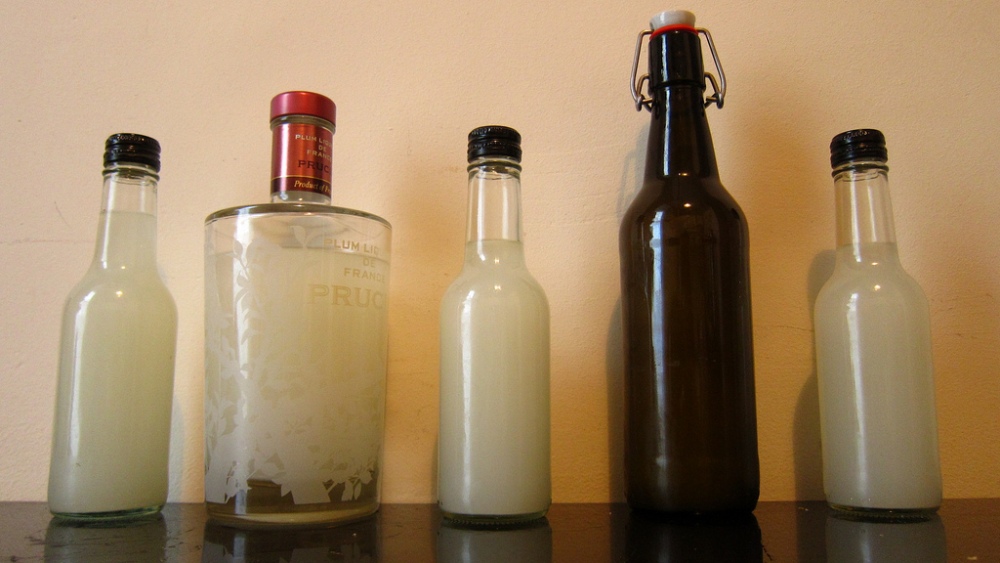
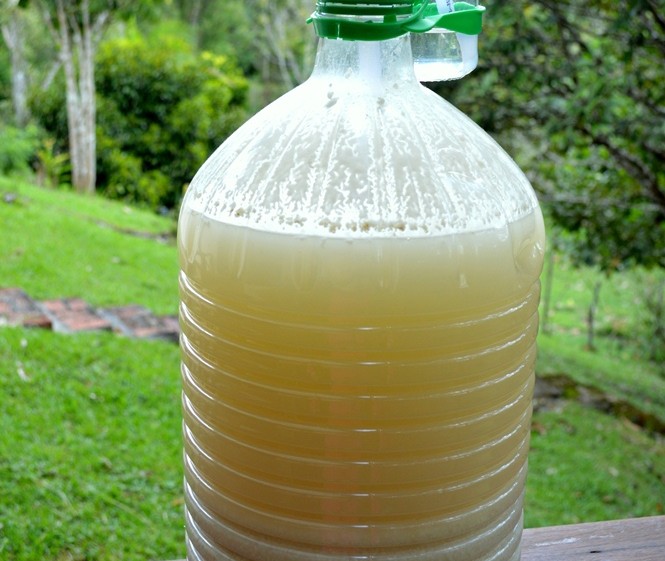




















In Sarawak its known as tuak.
Oh, reminds me the home made rice wine in my home town. My mom makes wine with grape every year in Beijing.
Sounds tasty Guang 🙂
Ba nt balik sabah kita try lihing pula..
Guang Ran!!
Clarance S Basinau : teringat mummy ko punya brew…
This brings to mind some taboos associated with making this wine. Chief among them :- DON’T lose your cool or allow yourself to be ‘baited’ by anyone (esp if kids act up…), lest he wine turn sour! Hahaha! Thus reminds me of the extreme control exerted on their tempers by some mums when irritated by cheeky kids while making this. Heehee!
Tapai – old folks at kampungs used to make this 🙂
sake?
Make it in secret. Can bring trouble if the -people’ comes to know of it……Malaysia boleh
Thanks for useful information. It’s not easy to people who live in hot region and ignorant to cooking and hygienic brewing. I strongly recommend all of you to taste,enjoy the rice wine at Happy Together in Oakland. If you’d consume 15bottle(RM 240) per week, it might be economic and enjoy the tasteful wine as you like. Go to there and get advice from William who had orgarnised the Korean club of beer, wine in KL.
It is perfectly legal to do this. But to sell it on a large scale you would need a license. Many Kadazandusuns make their own rice wine at home. The rice yeast (ragi) is sold at the weekly markets(tamu) in Sabah.
It’s perfectly legal to make this at home in Sabah. Many families living villages make their own rice wine. But making it for commercial purposes would require a special license. The rice yeast (ragi) can be bought at weekly markets(tamu).
Trishul Vikram
I think this could be my new business venture Kate. I’ll be recruiting tasters!
I’m on my way. 🙂
Berdosa tu dan tidak baik diamalkan
I thought you’d been making your own smoke, Nicola. x
This is moonshine, illegal in some countries
Ask the Sabahan & Sarawakian….
Tuak..
Very nice and reminder use glass bottle!
Moonshining, thanks for sharing
Tapai ubi…same lah
Yeah! make samsu!
Do not use plastic bottles! Use glass or porcelain jars.
Was making this to take back to CH in 1974!
Tuak — from Sarawak
like japs sake huh..
Is it legal to do this?
It’s common already to the Natives of Sarawak.
Share thoughts or questions!